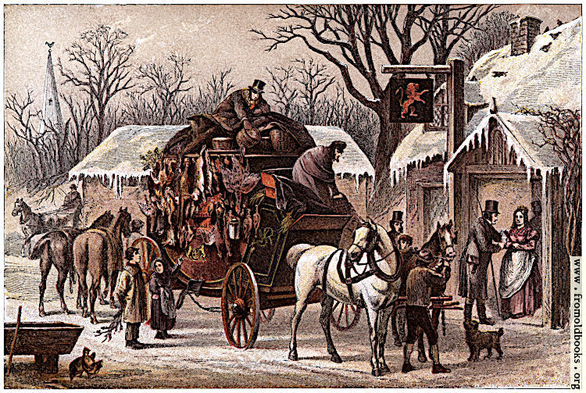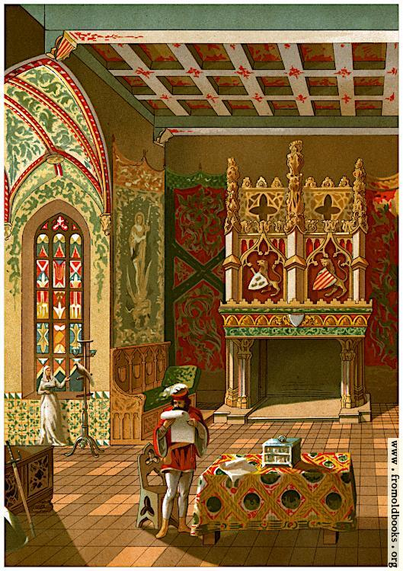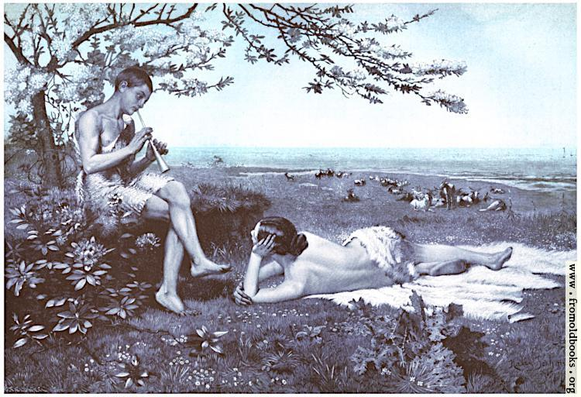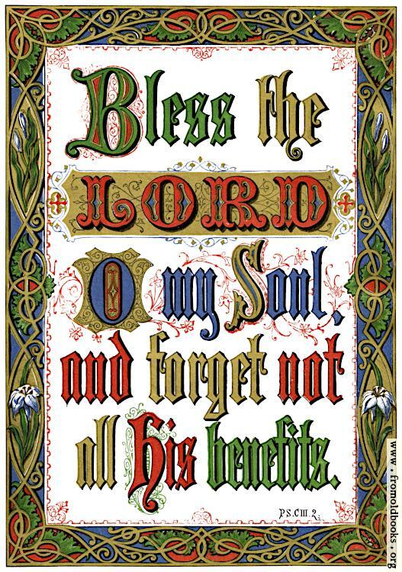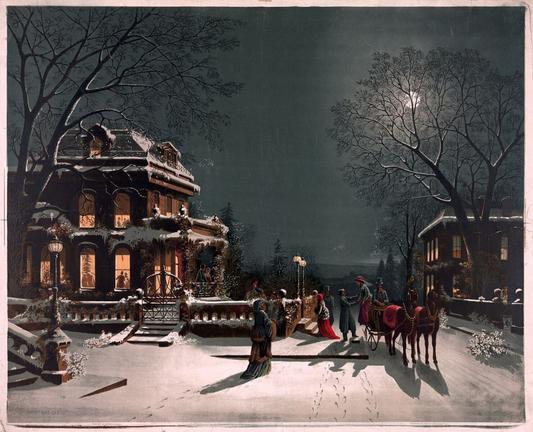Christmas Eve by J. Hoover
Joseph Hoover: A Pioneer in Chromolithography
“Christmas Eve” by J. Hoover, with its rich visual details, evokes feelings of warmth and nostalgia, blending traditional imagery associated with Christmas against a tranquil, snowy backdrop.
Joseph Hoover, born of Swiss-German heritage in Baltimore on December 29, 1830, emerged as the most prolific chromolithographer of parlour prints in Philadelphia during the late 19th century. His early education through the public school system of Baltimore set the foundation for his artistic career. Trained as an architectural wood turner, Hoover made a significant move to Philadelphia in 1856, where he established a wood turning and framing business located on the 1400 block of Hamilton Street. His chromolithographic works would come to define the parlour print industry, influencing both artistic and commercial practices in the region.
Hoover’s contributions to the world of art and printmaking reflect a blend of craftsmanship and creativity, embodying the spirit of innovation that characterized the late 19th century. His legacy continues to resonate within the field of chromolithography, showcasing the rich history of printmaking in Philadelphia.
The Magic of Christmas Through the Centuries
Christmas, celebrated on December 25th, possesses a rich tapestry of traditions and meanings that have evolved over the centuries. The holiday has transformed from a purely religious observance into a global celebration encompassing various cultural practices, festive rituals, and cherished customs.
The origins of Christmas date back to the early centuries of Christianity. The first recorded celebration of Christmas occurred in Rome in 336 AD. During the Middle Ages, Christmas became a time of feasting and merriment. The holiday was interwoven with local customs and beliefs, leading to the incorporation of traditions such as carolling, the Yule log, and various forms of gift-giving. The Renaissance brought forth a renewed appreciation for art and storytelling, influencing the way Christmas was celebrated.
The 19th century saw a revival of Christmas traditions, largely influenced by the Victorian era. The publication of Charles Dickens’ “A Christmas Carol” highlighted themes of generosity and kindness, reinforcing messages of family and goodwill. The modern image of Santa Claus began to emerge during this time, with the influence of the poem “A Visit from St. Nicholas” (commonly known as “The Night Before Christmas”).
Christmas Eve by J. Hoover No Known Restrictions (Public Domain via Wikimedia Commons) . Credit Library of Congress via pingnews.
Christmas Today!
As the world became more interconnected, Christmas was embraced by various cultures, each adding their unique flavours to the celebration. Christmas continues to evolve, reflecting modern values and societal changes. With the rise of technology and global commerce, the holiday now often emphasizes consumerism and material gifts. However, the core messages of love, compassion, and the spirit of giving remain unchanged.
I believe the magic of Christmas lies in its ability to adapt and resonate with people across different cultures and generations. On this Christmas Eve, I am reminded of the importance of community, connection, and the enduring spirit of hope that resonates through the ages.
From our house to yours, we wish you the joy of family, the warmth of friends and the gifts of laughter, peace, and love.
Rebecca
#Baltimore #Christmas #Chromolithography #JosephHoover #Philadelphia



